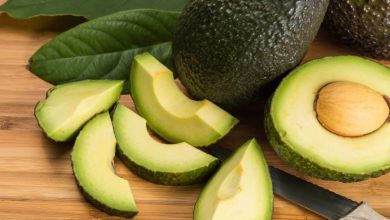The Food Pyramid Conspiracy

The Food Pyramid Conspiracy
Introduced in 1992, the USD
A food pyramid gave American Pool Team Name
s a general guide to how they should eat. Growing up in the United States, I personally was blasted severe
l times with this so called “food
pyramid.” We were told that a he
althy diet should include, 6-11 se
vings of grains per day, and only 2-3 servings of meats, nuts, or beans. So, g
reat, now that all americans know
how they should eat, we should be
come a more healthy country as a
whole. We all know how that’s turn
ed out. In this article, I hope to rev
eal the conspiracy of the food pyra
mid, as well as explain (and prove
with data) why it is an ineffective d
iet plan. In addition, I will suggest
a much more effective diet that actually makes sense.
In 1992, the US Department of Agric
ulture (USDA) published the Improved Americ
an Food Guide Pyramid to supposedly give people a general idea about how they should eat. This pyramid put
an emphasis on grains, with vegetables and
fruit as slightly less important and dairy and
meat even less important. At the very top the
ere was the “oil” group that contains fatty fo
ods and sweets. The general guide for serv
ings of each group was as followed: 6-11 see
rvings/day of grains, 7-9 servings/day of ve
getables, 2-4 servings/day of fruit, 3 cups/day of dairy, and 3-5 servings/day of meat, a
nd little or no food from the oil group.
So great, now Americans have
e a general diet plan to follow that
was designed for optimal health. Not. This plan was developed by the US Department of Agriculture, n
ot the Department of Health and Hu
man Services. So the plan wasn’t developed with human
health in mind, it was developed to be an ade
quate plan that would benefit the A
merican agricultural business. Lobbyists for the food
production industries of America highly influenced the
e food pyramid that they US
DA finally published. In fact, the USDA actually o
riginally had a panel of nutritional experts advise them on how
they should structure this diet plan, but they decided to
disregard their advice to please the lobbyists. That’s
right, the published version of the food pyramid was more
of a product of corruption than of real advice. And it
s worked, as Americans are eating more grain than ever before.
But I’m not just going to make such a bold claim about
the uselessness of the food pyramid without some
evidence to support it. In a recent CDC report, the trends
of changes in macronutrient (protein, carbs, fat) ratios and calorie consumption in
the United States from 1971-2000 were analyzed, with s
ome fairly interesting results. In the very first sentence of
the report, it mentions that “the prevalence of obesity i
n the United States increased from 14.5% to 30.9%.” In the heart of the report, 3 key trends were unvieled:
Mean percentage of calor
ies from carbs increased (42.4%-49.0%)
Mean percentage of
calories from fat decre
ased (36.9%-32.8%)
Mean total calorie con
sumption increased (2450-2618 calories)
If you don’t un
derstand what this data means, I’ll explain it to yo
u. In 1971, people were eating less carbs, as
Read More : Pool Team Name



